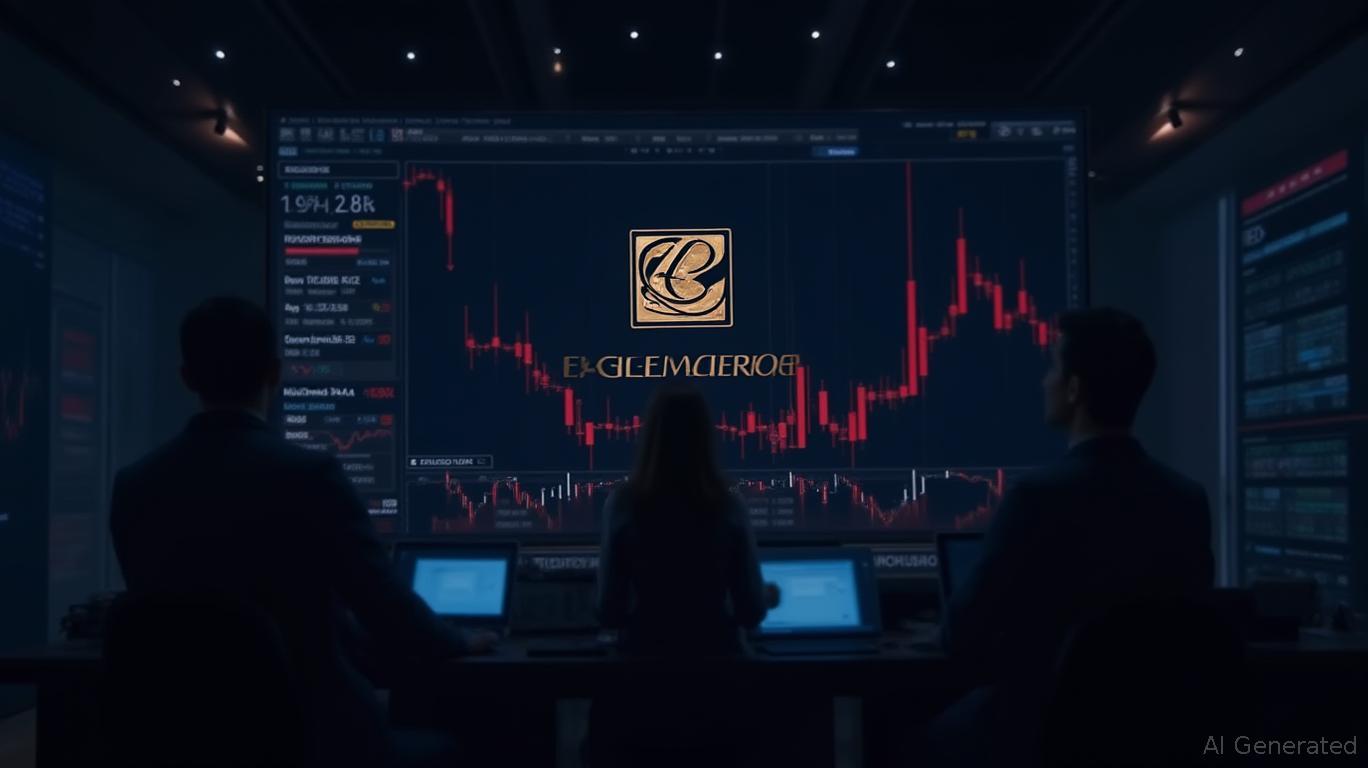Estee Lauder Extends Losses to 2.94% Amid Persistent Bearish Technical Signals
Alpha InspirationTuesday, Jun 3, 2025 6:50 pm ET
The Estee Lauder (EL) concluded the latest trading session at $66.65, down 0.43% and extending its losing streak to two consecutive days, accumulating a 2.94% decline over this period. This recent weakness occurs within a broader context established by the provided historical price data, warranting a multi-faceted technical examination.
Candlestick Theory
Recent price action shows challenging the $65.41-$66.91 support zone, originating from the May 27th bullish engulfing pattern low and reinforced by the May 20th and 22nd closes. A failure to hold this level may open a path towards the significant psychological support near $64 (February lows). Resistance is firmly established near $68.50-$69.50, stemming from multiple failed rallies in late May, forming a potential double top pattern. The succession of small-bodied, lower closing candles over the last two sessions suggests persistent selling pressure near-term.
Moving Average Theory
The moving averages depict a challenging trend environment. The shorter-term 50-day moving average (approx. $70 based on data) sits decisively below the longer-term 200-day moving average (approx. $84-$85), confirming a primary downtrend. The 100-day moving average (approx. $74-$75) reinforces this bearish alignment above the 50-day. Recent price action has been contained below all three key averages, particularly the flattening 50-day, acting as dynamic resistance around $70 and solidifying the bearish posture. The "death cross" (50DMA below 200DMA) remains firmly in place.
MACD & KDJ Indicators
The MACD histogram resides below its signal line and the zero line, signaling bearish momentum is dominant. While it shows minor stabilization over the past few days, it lacks any convincing upward thrust to suggest a reversal. The KDJ indicators exhibit conflicting signals: K (17.5) and D (24.2) are deeply oversold (<20), theoretically suggesting exhaustion. However, the J-line (-15.6) plunging further highlights intense near-term selling pressure. This divergence (deeply oversold K&D vs. plunging J) suggests extreme bearish pressure could persist before any significant rebound, though it also flags the potential for a short-term bounce due to oversold conditions.
Bollinger Bands
Price currently trades near the lower Bollinger Band (~$66.00), typically indicating an oversold condition or being at the lower bounds of expected volatility. The bands themselves have shown moderate contraction compared to periods like late April/early May, suggesting a relative decrease in volatility. However, sustained trading at or below the lower band often precedes either a technical bounce or continuation if bearish momentum is strong enough to force band expansion downwards. The lack of pronounced band contraction suggests a decisive break lower might still be possible.
Volume-Price Relationship
Volume trends offer crucial context. The sharp decline on April 3rd (down ~15.4%) occurred on very heavy volume (11. shares), confirming institutional distribution at the start of the major downtrend. The subsequent rally attempts through April and May generally saw lower volume on up days compared to higher volume on down days – a bearish divergence suggesting lack of conviction behind rallies. Most recently, the decline on May 30th (-2.52%) saw significantly higher volume (4.62M) than the preceding day's gain (+3.62% on 5.82M volume). This negative volume pattern reinforces the bearish bias near-term.
Relative Strength Index (RSI)
The current daily RSI reading sits near 37. While not yet in the absolute oversold territory (<30), it has fallen below the neutral 50 level and is trending downwards. It briefly touched oversold (<30) levels recently but failed to generate sustained upside. The persistent inability to hold above 50 during recovery attempts underscores underlying weakness. The oversold readings generate potential for a technical bounce but, crucially, the trend remains down until confirmed RSI strength is demonstrated.
Fibonacci Retracement
Applying Fibonacci retracement to the significant decline from the April 3rd high (~$65.96) to the May 8th low ($59.26) provides key levels. The 38.2% retracement (~$62.00) and the more significant 61.8% retracement (~$64.00) were critical hurdles. Price struggled to sustain above the 61.8% level ($64.00) throughout May, ultimately failing to reach the 78.6% level (~$65.50). This $64.00-$65.50 zone now acts as major confluence resistance. The 0% retracement level (near the $59.26 May 8th low) represents the next significant downside target if current support near $65.40 fails.
Confluence Points & Divergences
A significant area of confluence exists near $64.00-$65.00. This zone combines the major Fibonacci 61.8% retracement level ($64), significant psychological support ($64), the February lows, and the current lower Bollinger Band. A decisive break below would likely intensify selling pressure towards the May lows near $59. The KDJ indicator presents a noteworthy divergence: while the K and D lines are deeply oversold, potentially flagging exhaustion, the continued plunge in the J-line and persistently bearish MACD signal the immediate momentum remains overwhelmingly negative. This negative divergence suggests any bounce from oversold K/D levels could be short-lived without accompanying bullish signals from other indicators like the MACD crossing above its signal line or decisive positive volume confirmation on a rally. The convergence of price testing the $65.40 support, an RSI near 37 (approaching oversold), and sitting near the lower Bollinger Band indicates this area is pivotal; a breakdown here would significantly increase the bearish probability.

Disclaimer: The news articles available on this platform are generated in whole or in part by artificial intelligence and may not have been reviewed or fact checked by human editors. While we make reasonable efforts to ensure the quality and accuracy of the content, we make no representations or warranties, express or implied, as to the truthfulness, reliability, completeness, or timeliness of any information provided. It is your sole responsibility to independently verify any facts, statements, or claims prior to acting upon them. Ainvest Fintech Inc expressly disclaims all liability for any loss, damage, or harm arising from the use of or reliance on AI-generated content, including but not limited to direct, indirect, incidental, or consequential damages.

Comments
No comments yet